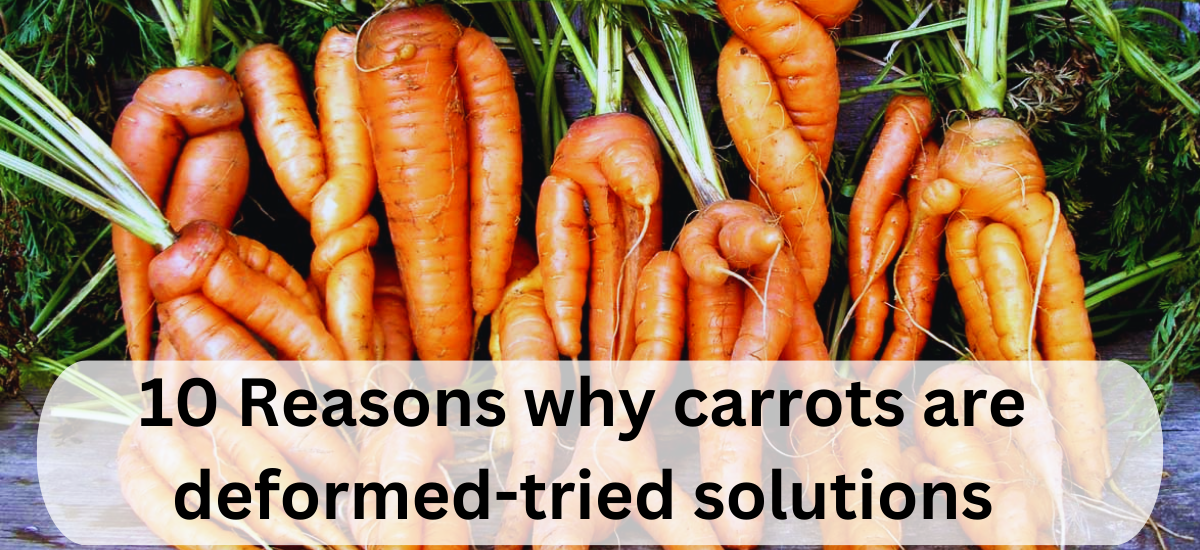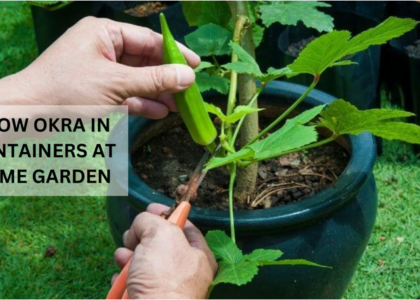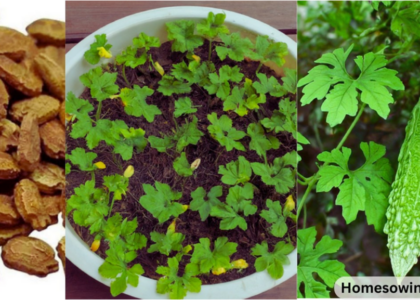Introduction
Carrots, revered by gardeners for their vibrant hue and crisp texture, can sometimes present a challenge when they take on peculiar shapes and sizes. This article delves into the intricacies of carrot cultivation, exploring the ten common causes of deformed carrots and offering practical solutions for cultivating flawless, healthy roots.
Causes of Deformed Carrots
1. Soil Conditions

Carrots are particularly sensitive to their soil environment. Deformities can arise from the presence of obstacles like rocks, soil clods, large roots, or wood. Additionally, high nitrogen content in the soil may lead to branching, and compacted or heavy soils, such as clay, can hinder proper root penetration.
2. Dense Plantings

The density of carrot plants plays a pivotal role in root development. Higher plant density often correlates with more deformed roots. Thinning seedlings when they reach 3-4 inches in height is a crucial practice to prevent deformities and ensure adequate space for healthy growth.
3. Weed

Weeds pose a significant threat to carrot development, competing for essential resources like space, nutrients, water, oxygen, and light. Regular weeding is imperative to prevent interference and foster optimal carrot growth.
4.Transplanting

Carrots prefer stability during their growth phase and are sensitive to transplanting. It is advisable to sow carrot seeds directly in the desired location, avoiding any potential disturbances that may lead to deformities.
5. SeasonalitY

Being biennials, carrots can exhibit deformities in their second growing season. Carrots left in the ground over winter may develop pithy, less tasty, and branched roots. Harvesting carrots in the first year helps avoid these second-year deformities.
6. Pest & Disease

Pests and diseases can wreak havoc on carrot crops. Root-knot nematodes cause galls or knots on roots, while Aster Yellows Phytoplasma, spread by leafhoppers, leads to pale, yellow leaves, curling foliage, and deformed roots.
7. Improper Watering

Inconsistent watering patterns can result in irregular root development. To ensure healthy growth, carrots need consistent moisture without succumbing to waterlogged conditions.
8. Incorrect pH Levels

Carrots thrive in slightly acidic to neutral soil conditions (pH 6.0-7.0). Testing soil pH and amending it accordingly is crucial for creating an optimal growing environment for carrots.
9. Insufficient Sunlight

Carrots require ample sunlight for proper growth. Providing at least 6-8 hours of direct sunlight daily is essential to ensure robust and healthy root development.
10. Poor Seed Quality

The quality of seeds directly influences carrot growth. Low-quality or old seeds may result in irregular root development. Sourcing high-quality, fresh carrot seeds are imperative for a successful harvest.
Solutions to Prevent Deformed Carrots.
1. Soil Preparation
Prioritize deep, loose, sandy loam soil enriched with compost and well-aged manure or a balanced fertilizer (5-10-10). Removing rocks and large clods from the soil creates an ideal environment for carrot growth.
2. Dense Plantings
Thin carrot seedlings when they reach 3-4 inches in height to reduce plant density and allow for optimal root development.
3. Weeds
Regularly weed carrot beds to eliminate competition for resources and promote unhindered carrot growth.
4. Transplanting
Avoid transplanting carrots; instead, sow seeds directly in the desired location to minimize disturbance during growth.
5. Seasonality
Harvest carrots in the first year to sidestep second-year deformities caused by winter conditions.
6. Pest & Disease: Root-Knot Nematodes
Remove infected plants without composting.
Harvest the spring crop early to control nematode populations.
Implement crop rotation with non-host plants.
Interplant with marigolds to naturally deter nematodes.
Enhance soil health by adding organic matter.
Aster Yellows Phytoplasma
Mulch with aluminum foil or oat straw.
Grow carrots under row covers to keep leafhoppers away.
Remove and dispose of affected plants to prevent the spread of the disease; do not consume bitter roots.
7-10. Additional Considerations
Provide consistent watering patterns to ensure optimal moisture levels.
Regularly test and adjust soil pH levels for a carrot-friendly environment.
Guarantee sufficient sunlight exposure by selecting an appropriate planting location.










